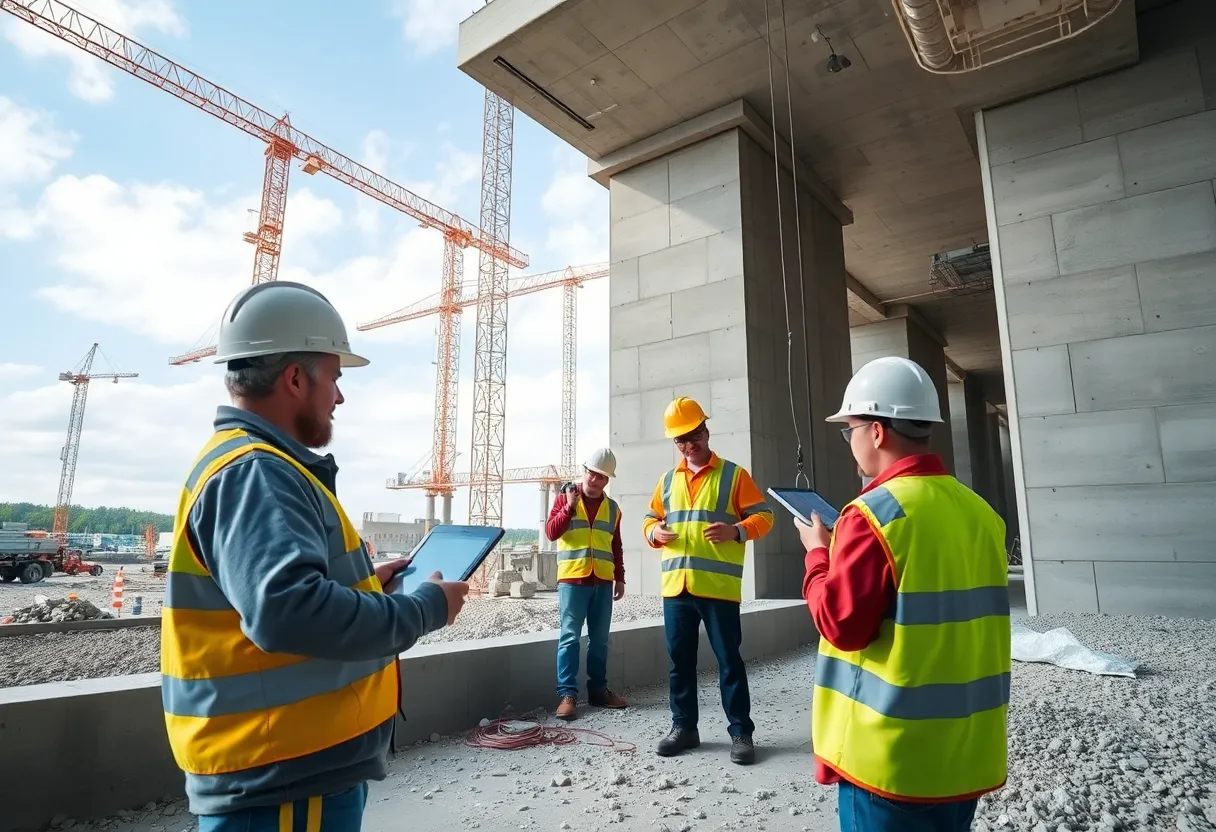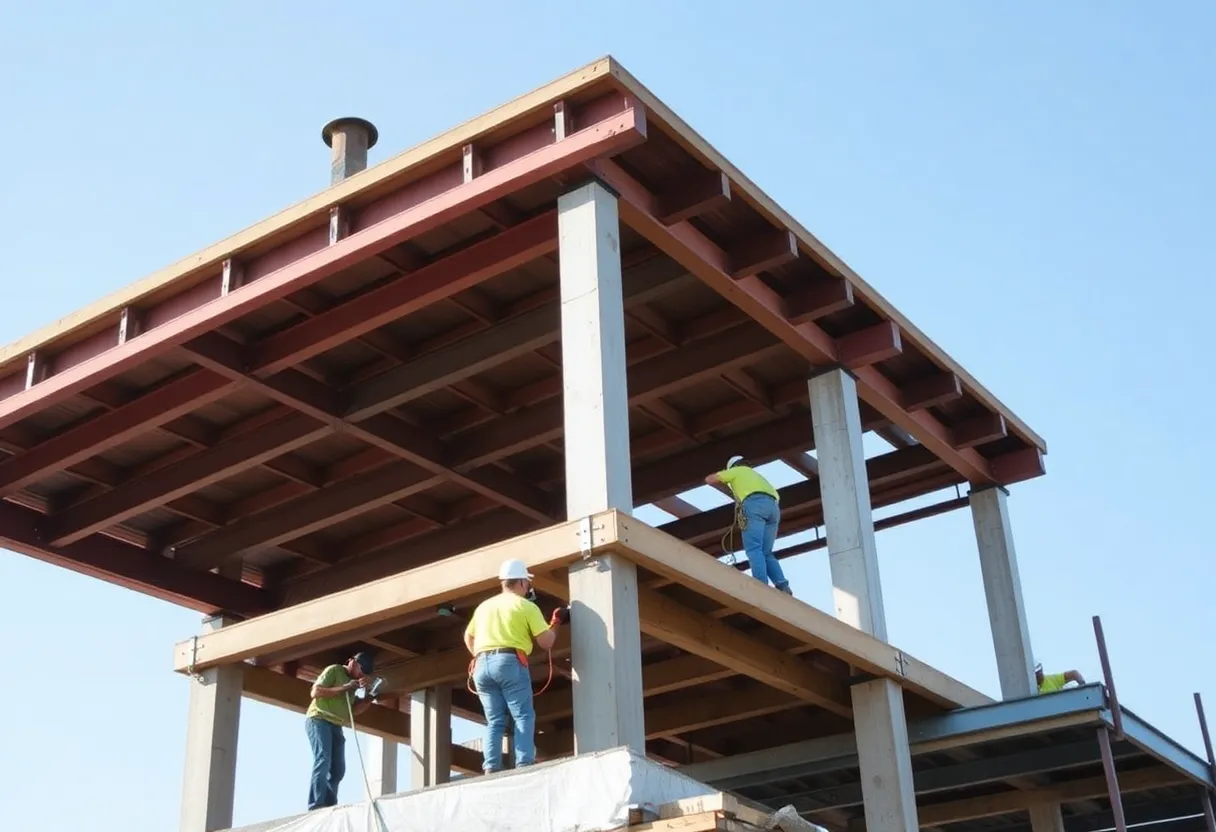News Summary
The concrete industry is at a critical juncture, grappling with a skilled labor shortage, rising material costs, and supply chain unpredictability. As companies face these challenges, many are turning to innovative technologies and strategic partnerships to enhance performance and productivity. The shift towards digital workflows and tools like Building Information Modeling is helping contractors adapt to these changes, while certain segments of the concrete market see growth amidst fluctuating residential demand.
Concrete Industry Faces Major Challenges and Opportunities Amid Technological Shift and Labor Shortages in 2025
The concrete industry is currently navigating a landscape filled with significant challenges and emerging opportunities. As of 2025, contractors are facing a scarcity of skilled labor, rising material costs, and unpredictable supply chain issues. These hurdles are compelling companies to rethink their strategies and adopt innovative technologies to optimize performance.
One of the most pressing concerns is the skilled labor shortage, particularly for specialized roles such as finishing crews and formwork specialists. This shortage significantly hampers the productivity of field teams, making it challenging for contractors to meet project deadlines and maintain quality standards. In response to this issue, many contractors are exploring nontraditional labor pools, forming partnerships with trade schools, and turning to technology and automation to help bridge the labor gap.
Alongside labor shortages, contractors must deal with rising material costs and the volatility of supply chains, making budget management more complicated than ever. Tariffs on imported steel, especially for components like rebar, have only intensified these financial pressures. Additionally, the process of developing remediation plans for quality issues on specific projects can span several weeks, impacting timelines and budgets.
Field productivity is also hindered by data fragmentation and the flow of inconsistent information. Teams often rely on outdated prints which can lead to misaligned embed placements and incorrect drainage slopes. Consequently, the need for reworks—often involving jackhammering and re-pouring—erodes time and resources, ultimately decreasing overall site output.
In a bid to mitigate these challenges, contractors are swiftly adopting technology and enhancing project planning. The integration of digital workflows and connected construction platforms has become increasingly prevalent, allowing for real-time updates to reach field crews. This shift aims to establish a “single source of truth,” ensuring everyone is on the same page and minimizing misunderstandings.
Tools like Trimble Connect are proving invaluable in bridging gaps between various stages of construction—from design and pre-construction to final site execution. Furthermore, early adopters of Building Information Modeling (BIM) have reported improvements in accuracy and communication, leading to enhanced throughput.
Machine control technology is also gaining ground, offering precise material placement, particularly beneficial for 3D printing and concrete paving operations. To enhance efficiency, contractors are investing in software solutions for estimating, operations, and financial management. These tools enable real-time resource scheduling, ultimately improving project outcomes.
Despite the many challenges, there are still growth areas within the concrete sector. The commercial and precast concrete segments are gaining traction, largely due to increased construction of data centers and warehouses. The tilt-up concrete market is likewise rebounding, particularly in the construction of large, repeatable structures such as hotels and hospitals.
Conversely, the residential concrete market faces a downturn, primarily owing to fluctuations in interest rates and a noticeable decline in housing demand. While public infrastructure projects remain steady, they are not immune to budget constraints that limit new large-scale developments.
The future of concrete construction is also influenced by trends such as AI-driven logistics, sustainability mandates, and prefabrication. Federal investments aimed at enhancing manufacturing capabilities and digital infrastructure are expected to fuel growth in commercial and industrial concrete projects.
Moreover, there is considerable potential for innovation through the application of artificial intelligence in concrete pours to facilitate real-time field optimization and quality control. Contractors are increasingly investing in digital tools designed for estimating and project management to optimize the use of materials and labor, especially as profit pressures escalate.
Labor costs in the construction industry continue to pose a concern, prompting interest in alternative housing solutions that utilize precast concrete. Such methods offer notable advantages, including reduced waste and labor expenses and can significantly enhance construction speed and durability. However, precise training is essential for crews to effectively navigate and utilize these advanced technological tools.
As challenges mount and opportunities arise, the concrete industry is at a crossroads, where the integration of new technologies and innovative practices may very well determine its future direction.
Deeper Dive: News & Info About This Topic
Additional Resources
- For Construction Pros: Trimble Construction’s State in Concrete Industry
- Wikipedia: Concrete
- ConstructConnect: Moss Concrete Urban Construction Challenges
- Google Search: Concrete Industry Trends
- ENR: Lawsuit Claims Racial Discrimination in Obama Center Issues
- Google Scholar: Concrete Technologies
- KY3: MoDOT Inspectors Find Issues with I-44 Concrete Project
- Encyclopedia Britannica: Concrete
- The Conversation: Future of Concrete in Affordable Homes
- Google News: Concrete Construction Technology
Author: Construction FL News
The FLORIDA STAFF WRITER represents the experienced team at constructionflnews.com, your go-to source for actionable local news and information in Florida and beyond. Specializing in "news you can use," we cover essential topics like product reviews for personal and business needs, local business directories, politics, real estate trends, neighborhood insights, and state news affecting the area—with deep expertise drawn from years of dedicated reporting and strong community input, including local press releases and business updates. We deliver top reporting on high-value events such as the Florida Build Expo, major infrastructure projects, and advancements in construction technology showcases. Our coverage extends to key organizations like the Associated Builders and Contractors of Florida and the Florida Home Builders Association, plus leading businesses in construction and legal services that power the local economy such as CMiC Global and Shutts & Bowen LLP. As part of the broader network, including constructioncanews.com, constructionnynews.com, and constructiontxnews.com, we provide comprehensive, credible insights into the dynamic construction landscape across multiple states.





